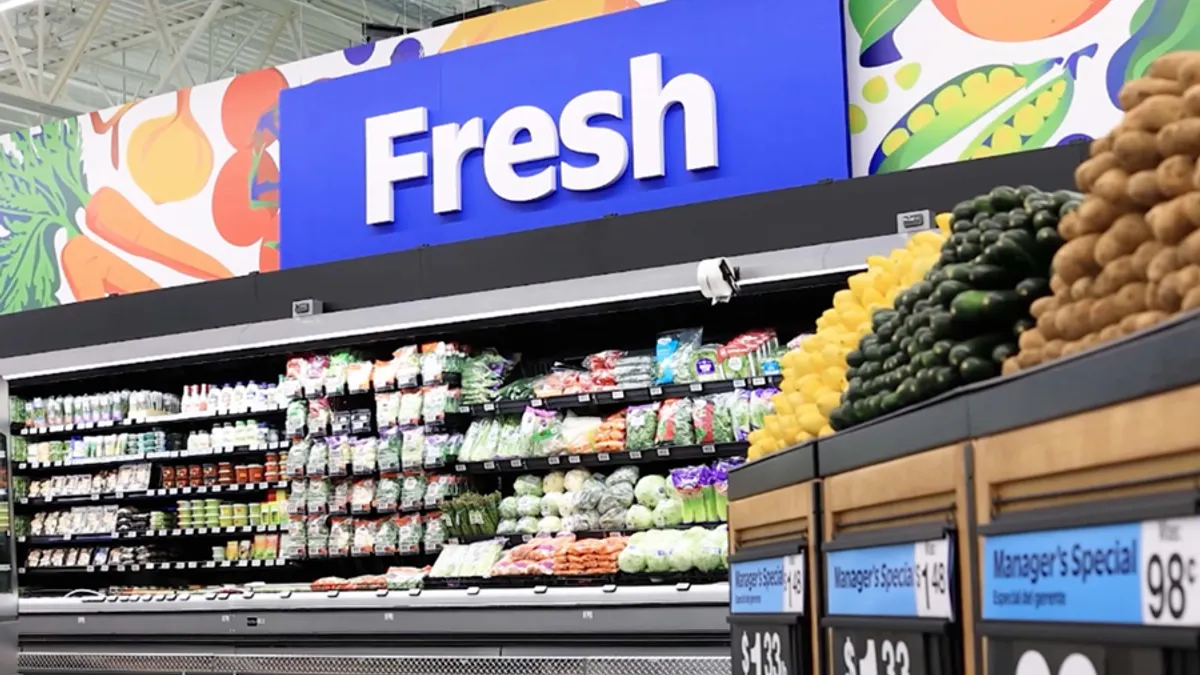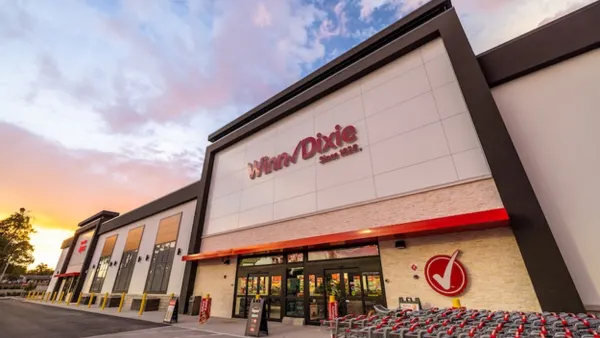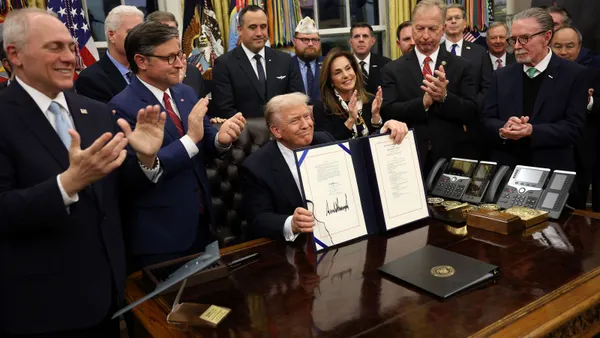Dive Brief:
- Walmart’s U.S. comparable-store sales excluding fuel rose 4.6% during the second quarter of fiscal year 2026, driven by strong growth in grocery and health & wellness.
- During the quarter, Walmart offered roughly 7,400 temporary price cuts across its assortment — about 2,000 more than in Q1 — and increased the number of grocery rollbacks by 30% compared with the prior year, Walmart President and CEO Doug McMillon told investors during a Thursday morning earnings call.
- Walmart raised its full-year guidance for net sales growth and adjusted earnings per share as the company feels well-positioned for the rest of the year, even amid macro-economic uncertainty, company executives told investors.
Dive Insight:
Walmart’s price positioning remains a key way to attract customers, company executives said during the investor call.
“We’re navigating this dynamic operating backdrop very well. We said we would play offense to keep prices as long as we can for as long as we can, and that’s what we’re doing,” CFO John David Rainey said on the call, adding that Walmart has financial flexibility from growth in its higher-margin businesses.
So far, consumer behavior has been “generally consistent” as the impact of tariffs has been gradual enough to minimize behavioral adjustments, McMillon said. The adjustments Walmart has seen include moderations in units for items in discretionary categories where prices have gone up as well as shopping changes among middle and lower-income households, more so than among higher-income households, he said.
As the company replenishes inventory at post-tariff price levels, though, it has continued to see costs increase each week and expects that will continue into its third and fourth quarters, McMillon said.
Food remains a growth driver for Walmart. The retailer’s U.S. grocery segment saw mid-single-digit growth in Q2. The category brought in $276 billion in net sales in fiscal 2025, up nearly 12% from the same period two years ago.
Walmart U.S.’s e-commerce profitability increased in Q2 as the company continued to improve net delivery costs and record strong growth in advertising, Rainey said.
During Q2, Walmart U.S. e-commerce sales grew 26% year over year, stepping up from the low 20% growth range during the prior four quarters, Rainey said. All fulfillment channels increased, led by delivery from stores, which was up almost 50%, he said, noting that Walmart is continuing to make delivery faster. Deliveries fulfilled in three hours or less accounted for approximately one-third of deliveries from stores in recent weeks, with 20% of delivery orders arriving in 30 minutes or less, he added.
In response to an analyst’s question about growing grocery delivery competition, McMillon said Walmart isn’t surprised that its rivals are turning up the heat.
“I’ve been doing this for a long time, and competition just keeps getting better,” McMillon said, noting he expects convenience to continue driving consumers to Walmart’s online business.
The question comes a week after Amazon announced that it will make fresh grocery delivery available to thousands of communities through its same-day service.
For the full year, Walmart raised its projected net sales growth from an expected 3.75% to 4.75% and adjusted earnings per share from $2.52 to $2.62.












